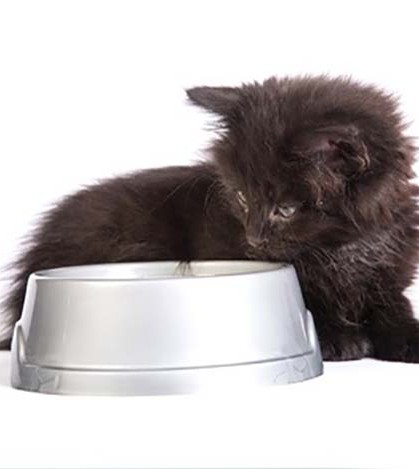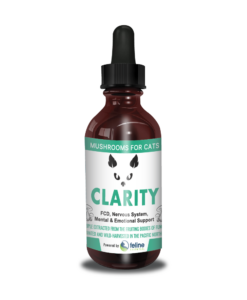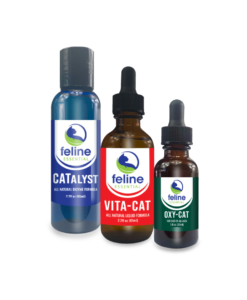We know all too well that transitioning our cats from dry to wet food can be a big challenge – but it’s so important to their overall health. Water depleted diets are the number one cause of urinary tract and bladder issues – and UTI’s and bladder problems are the number one reason for cats to visit a vet.
Most dry foods contain low quality proteins (more plant based instead of meat based) – and ALL dry foods, high quality or not, do not contain the amount of moisture needed to sustain a healthy urinary system. Many dry food companies are clever and coat the kibble with enticing animal flavoring (or digest), which makes the low quality foods more desirable to cats. This tasty trick makes the transitioning process more difficult – especially for finicky felines – but don’t give up.
In our experience (with our six cats), plan for this transition to take about two weeks. Change doesn’t happen overnight – unless your cat is purrfect!
Start by adding a small amount of wet food into the kibble. Slowly increase the amount over time while decreasing the amount of kibble. Again, don’t give up if your cat turns her nose up at the first wiff of wet food. Experiment with different flavors and brands… Weruva Lamb Burgini is a favorite at our house.
Patience is your friend in this endeavor… and so is hunger. It’s important that you don’t free-feed the dry food. As long as your cat has options, he will pick what he wants. Cats do not need food available 24/7. As evil as it may feel to us crazy cat lovers to deny those furry faces as they sit sadly by the food bowl, a little hunger won’t hurt – and will certainly help convince even the most stubborn cat that wet food is pretty delicious. The average cat will eat most any food that smells good when they are hungry. Use the hunger option for the most finicky of cats – but don’t make them stay hungry for more than 24 hours.
If you’ve tried a number of wet foods and your cat is still objecting to change, try adding tuna water, chicken broth or beef broth to the dry food. This can help them get accustomed to the texture of wet food. We found out that our cats love organic goat’s milk, so we used that to help with the transition as well.
Remember, the goal is to increase their water intake for their overall health and wellbeing.
If your cat takes to the wet food immediately, that’s great! You may see runny stools, however, as you would if you went on a total smoothie diet. Don’t fret. Their bodies just need to adjust and they often do so quickly. If you see the diarrhea over a prolonged period of time, try changing the wet food to another brand (the higher the quality – the better) or slow the transitioning process down to help smooth the transitioning along.
You may feel as though you are wasting money and food during the transition process of a finicky feline, but their health is totally worth it. We know this can be tough, and there will be times you will want to cave in but stay strong. This is tough love at its best.
Recommended Product For Your Cat





Recent Comments